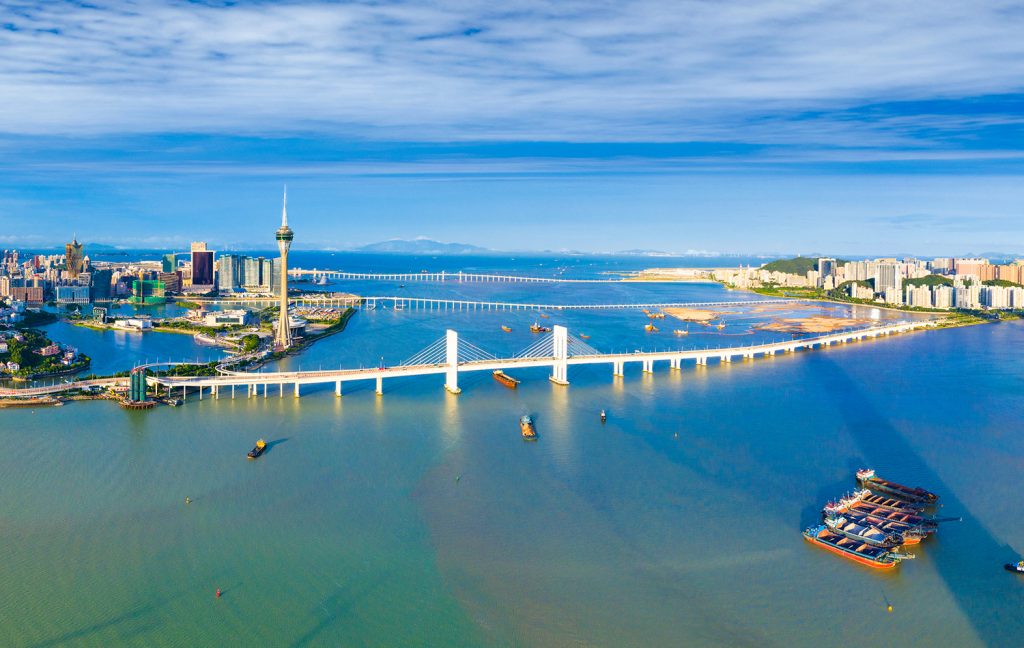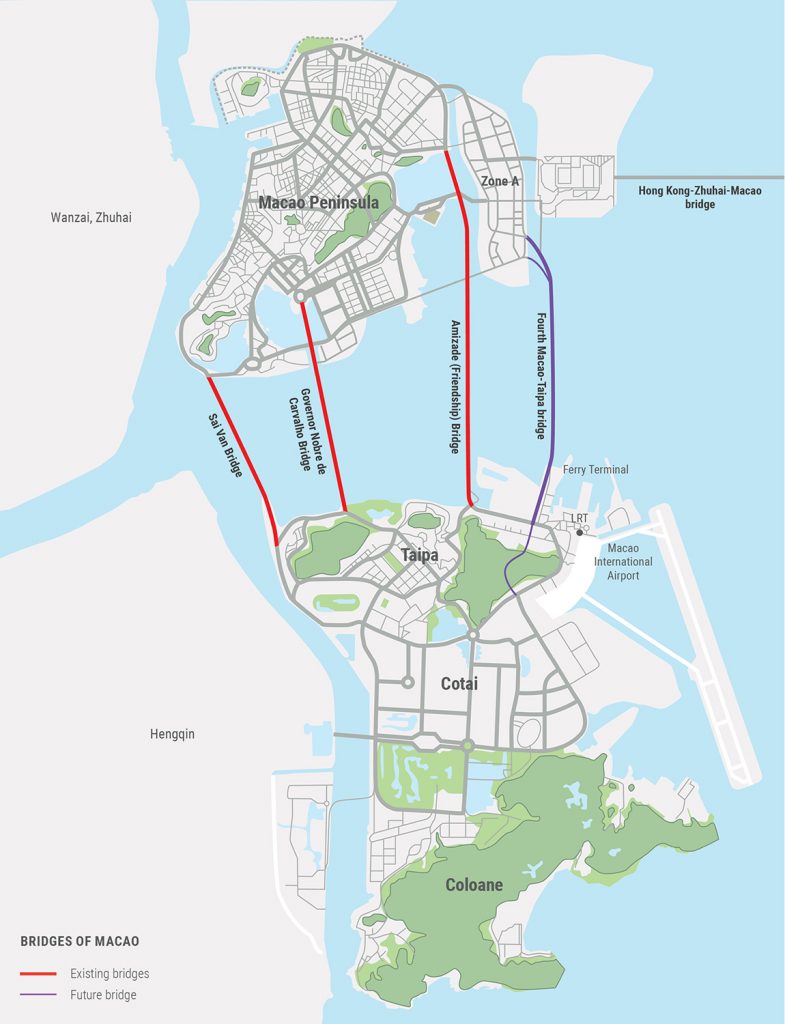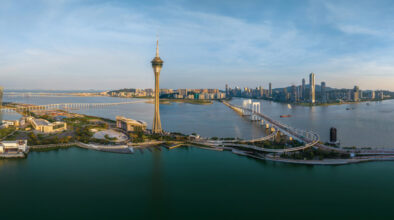When a fourth bridge opens linking the Macao peninsula to Taipa island in 2024, 50 years will have passed since the first bridge linking both sides officially opened. Much has changed since then.
In a clear demonstration of the development of Macao since 1974, the city built another three bridges in the intervening period to cope with the increase of traffic to and from the Macao peninsula and the islands.
The first bridge, the 2.5-kilometre Governor Nobre de Carvalho Bridge, was opened in October 1974. Local resident Martinho Alcântara Pedro recalls with pride the first day he could cross the bridge, “built by the famous Portuguese engineer Edgar Cardoso”, from Macao to Taipa.
“We were so proud and happy because it showed that Macao is more developed, and the government [intended] to modernise the islands of Taipa and Coloane,” says Pedro.
Two decades later, in March 1994, while Macao was still under Portuguese administration, the 4.7-kilometre Friendship Bridge opened, and in December 2004, after Macao had been returned to Chinese administration, the 2.2-kilometre Sai Van Bridge opened in the Nam Van area.
Now, the city is building a new link that represents a large step forward. Macao expects to open its fourth and latest bridge in the first quarter of 2024 as it continues to enhance its transport network and more fully integrate in the Greater Bay Area.
A new MOP 6.7 billion-bridge

The new 3-kilometre bridge has been in the works for a long time. More than two decades, in fact. When all is said and done, it will connect the Zone A reclamation zone – where urban development areas under construction will accommodate around 90,000 people, and where the customs border of the Hong Kong-Zhuhai-Macao bridge is located – with Zone E1, near the ferry terminal, airport and LRT (Light Rapid Transit) metro station.
Construction started in August 2020, carried out by a joint venture consisting of three companies for a price tag of MOP 5.27 billion.
The building consortium consists of two state-owned enterprises – China Civil Engineering Construction Corporation (CCECC) and China Railway Construction Bridge Engineering Bureau Group Co Ltd – and local construction company Omas Construction and Engineering Company Limited.
The four road accesses to the new bridge – adjudicated to local companies Nam Fong/Tat Cheong, Ming Shun, Tong Lei and Top Builders Group – will cost another MOP 1.4 billion, adding up to a total price of about MOP 6.7 billion.
Since the project began, Macao residents that cross the Friendship Bridge have been able to follow its near-daily development. Barring times when typhoons lashed Macao, the work has never stopped, and so commuters will have witnessed huge cranes laying the foundations. Other spots in Macao have also given everyday people a chance to watch this transformational project come to fruition.
On top of Taipa Grande, for example, residents can enjoy a fantastic view of the project. A group of students have taken photos of its progress from this vantage point since the project began.
“We are from the Macau University of Science and Technology (MUST) and we are taking photos of the work done in the construction of the bridge, every month and from the same angle, for a paper we are preparing for the class,” said one student, who is studying architecture at the university. “It is a great opportunity … because our photos could be kept for the future history of Macao development.”
Further integrating Macao into the Greater Bay Area

Bridges don’t just physically connect two pieces of land; they also connect people and project the confidence and status of societies able to build them.
By investing in another connection between Macao and Taipa, Macao aims to do more than simply build infrastructure.
“The fourth Macao-Taipa bridge will add a much needed and anticipated connection between recent urban reclamations,” José Luís Sales Marques, economist and president of the Institute of European Studies of Macau, said to Macao Magazine.
He added that the bridge will not only reduce congestion between Cotai, Macao’s entertainment and gaming hub, and residential Taipa, but rather enhance travel between the areas. By alleviating traffic in Cotai, it will make accessing Hengqin much more convenient which will in turn also facilitate movement across the Greater Bay Area via Guangdong.
Christine Choi, president of the Board of Directors of the Architect Association of Macau, agrees. “A new bridge and the extension of the LRT are the natural development of a place that has more population, traffic, visitors and tourists, and [bolsters Macao’s] integration in the Greater Bay Area,” she said.

While the three other Macao-Taipa bridges respectively have one, two and three vehicular lanes in each direction, government officials noted that this bridge will have eight vehicular lanes – four in each direction. One lane in each direction will be for motorcycles only. Pedestrians and cyclists, however, will be prohibited from using it.
Wind protection barriers will be installed, enabling it to remain open to traffic even during signal no. 8 typhoons.
It will also have two spurs with vital connections: one connecting to a man-made island where the Macao and Zhuhai border checkpoints are located, east of Zone A, and another to a future tunnel under Taipa Grande that will end in the roundabout near MUST, making for fast and easy access to central Taipa.
The tunnel is expected to be located between the Taipa cemetery and the incineration plant, but Public Works officials underlined that the government is still designing this project and could not provide a timetable for its completion.
A crucial transport hub

The bridge is opening at the perfect time. A raft of public housing projects, with 12,000 residential units, are currently being carried out in Zone A. According to officials, these projects will be completed in early 2024 and others in mid-2026, signalling the direction in which the city is developing.
The government is also studying the construction of an underwater tunnel for a future LRT line. This new project will run from the Portas do Cerco border area, cut across Zone A, link near the airport and connect to the existing LRT line that crosses Taipa.
With the new bridge and the future LRT both connecting the Macao peninsula to Taipa, tourists will find it much easier to enter the city either through the Portas do Cerco border or via the Hong Kong-Zhuhai-Macao Bridge and reach the entertainment facilities in Cotai.
To Wong Seng Fat, associate professor in the Faculty of Science and Technology at the University of Macau, “the new bridge can also achieve the effect of connecting all transport by sea, by land or by air, with more convenient traffic solutions, which will give more motivation and confidence to Macao residents to participate in the development of the Greater Bay Area.”
Wong believes the new bridge will benefit locals above all, though. “The new bridge will reduce the traffic pressure in the area of the Friendship Park in Hac Sa Van district, where a great number of vehicles cross from the northeast of the peninsula across the Friendship bridge.”
The symbolic weight of this bridge cannot be overstated. With the sea, land, rail and sky connected, traffic flows improved and long-term urban planning goals beginning to materialise, Macao is taking another large step forward on the road to the future.



